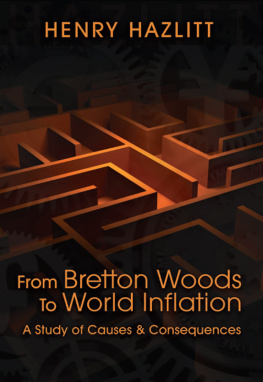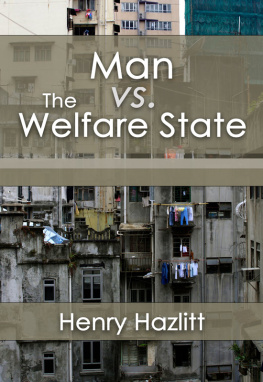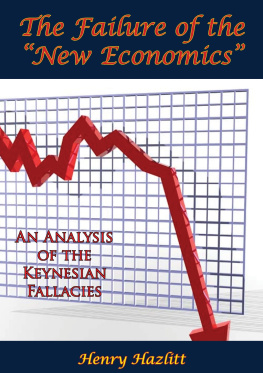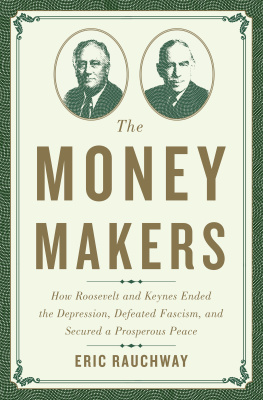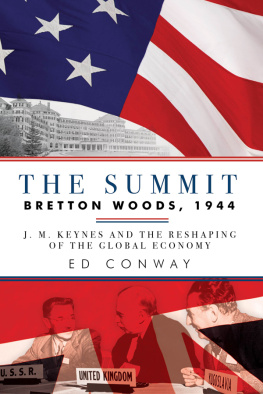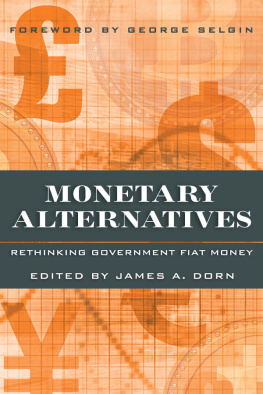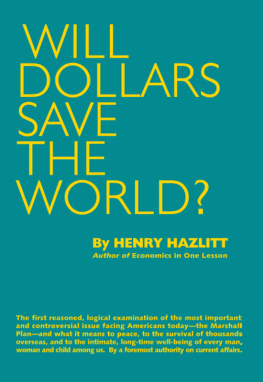
FROM
BRETTON WOODS
TO WORLD INFLATION
A STUDY OF
CAUSES AND CONSEQUENCES
Henry Hazlitt
REGNERY GATEWAY CHICAGO

Second printing
Copyright 1984 by Henry Hazlitt.
All rights reserved.
New York Times editorials of 1934, 1944, and 1945 are copyright by the New York Times Company. Reprinted by permission.
No part of this book may be reproduced in any form or by any electronic or mechanical means, including information storage and retrieval systems, without permission in writing from the publisher, except by a reviewer who may quote brief passages in a review.
Published by Regnery Gateway, Inc.
360 West Superior Street
Chicago, Illinois 60610
Library of Congress Cataloging in Publication Data Hazlitt, Henry, 1894
From Bretton Woods to world inflation.
1. International financeAddresses, essays, lectures. 2. United Nations Monetary and Financial Conference (1944: Bretton Woods, N. H.)Addresses, essays, lectures. 3. International Monetary FundAddresses, essays, lectures. 4. Inflation (Finance)Addresses, essays, lectures. I. Title.
HG3881.H361983332.45668343042ISBN 0-89526-617-2
Manufactured in the United States of America.
CONTENTS
Part I: Birth of the
Bretton Woods System
Introduction
The purpose of this book is to re-examine the consequences of the decisions made by the representatives of the forty-five nations at Bretton Woods, New Hampshire, forty years ago. These decisions, and the institutions set up to carry them out, have led us to the present world monetary chaos. For the first time in history, every nation is on an inconvertible paper money basis. As a result, every nation is inflating, some at an appalling rate. This has brought economic disruption, chronic unemployment, and anxiety, destitution, and despair to untold millions of families.
It is not that inflation had not occurred before the Bretton Woods Conference in July, 1944. Inflations widespread existence at the time, in fact, was the very reason the conference was called. But at that meeting, chiefly under the leadership of John Maynard Keynes of England, all the wrong decisions were made. Inflation was institutionalized. And in spite of the mounting monetary chaos since then, the worlds political officeholders have never seriously re-examined the inflationist assumptions that guided the authors of the Bretton Woods agreements. The main Institution set up at Bretton Woods, the International Monetary Fund, has not only been retained, its inflationary powers and practices have been enormously expanded.
Yet this book would never have been put together had it not been for the encouragement and initiative of my friends, Elizabeth B, Currier, Executive Vice President of the Committee for Monetary Research & Education, and George Koether. We were talking about the current world monetary chaos, and one of them referred to the possible role played by the monetary system set up at Bretton Woods. I happened to remark that when the conference was taking place I was an editor on The New York Times, that I was writing nearly all its editorials on the Bretton Woods decisions as they were being daily reported, and that in them I was constantly calling attention to the inflationary consequences those successive decisions would lead to.
Both Mr. Koether and Mrs. Currier immediately suggested that it might serve a useful purpose to reprint some of these editorials now. I told them I had long ago sent my New York Times scrapbooks, together with other papers, to the George Arents Research Library in Syracuse University, and that the scrapbooks were the only place I knew of where these editorials had been identified as mine. George Koether undertook to make the trip to Syracuse, studied the scrapbooks, and sent me photostats of 26 of them. The thoroughness of his research is shown by the fact that these included not only Times editorials of mine which appeared between June 1, 1944 and April 7, 1945, but one that was published on the virtues of the gold standard on July 9, 1934. His discrimination was such that I am confident he did not miss a single essential comment. Of the 26 editorials he sent, I am reprinting 23. I am greatly in debt to his selective judgment.
I feel that these editorials do warrant republication at this time, not to prove that my misgivings turned out to be justified, but to show that if sound economic and monetary understanding had prevailed in 1945 at Bretton Woods, and in the American Congress and Administration, these inflationary consequences would have been recognized, and the Bretton Woods proposals rejected.
When I began to re-read these old New York Times editorials I was reminded that I had summarized all the misgivings expressed in them in an article in The American Scholar of Winter, 1944/5, under the title The Coming Economic World Pattern: Free Trade or State Domination? I republish that here also. And once I had begun the brief history that follows of the actual workings of the Bretton Woods institutions, particularly The International Monetary Fund, I decided to include five other pieces: (1) excerpts from my book Will Dollars Save The World? which appeared in 1947; (2) a column in Newsweek magazine of Oct. 3, 1949, on the devaluation of the British pound and twenty-five other world currencies in the two weeks preceding; (3) my column for the Los Angeles Times Syndicate, Nov. 21, 1967, Collapse of a System; (4) another column for the Los Angeles Times Syndicate of March 23, 1969, The Coming Economic Collapse, which predicted that the United States would be forced off the gold standardan event that actually took place on Aug. 15, 1971; and (5) an article in The Freeman, August, 1971, entitled World Inflation Factory, calling attention once more to the inherent unsoundness of the International Monetary Fund system.
All of these pieces and their predictions show that the monetary chaos and world inflation could have been stopped, or at least greatly diminished, in 1971, in 1969, in 1949, or even in 1944, if those in positions of power had really understood what they were doing and had combined that understanding with even a minimum of political courage and responsibility.
I wish to express my thanks here to The New York Times, The American Scholar, The Foundation for Economic Education, Newsweek, The Los Angeles Times Syndicate, and The Freeman for giving me permission to republish these articles.
In my editorials for The New York Times, the understatement of the case against the defects of the Bretton Woods agreements was deliberate, because I had always to bear in mind that I was writing not in my own name but that of the newspaper. For one example: in the effort not to seem extreme, I looked for mitigating merits, and was far too kind to the proposed International Bank, simply because, unlike the Fund, it was not called upon to make enormous loans automatically, but allowed to exercise some discretion. The article setting it up even went so far as to stipulate that a committee selected by the Bank must learn whether a would-be borrower was in a position to meet its obligations!
Yet obvious as these dangers should have been, even in 1944, to those who bothered to read the text of the Bretton Woods agreements, I found myself almost alone, particularly in the journalistic world, in calling attention to them. (My editorials mentioned at the time the few persons and groups who did.) Even today, nearly forty years later, and twelve years after the agreements collapsed from their inherent infirmities, we hear journalistic pleas for their restoration. Even the usually perceptive

